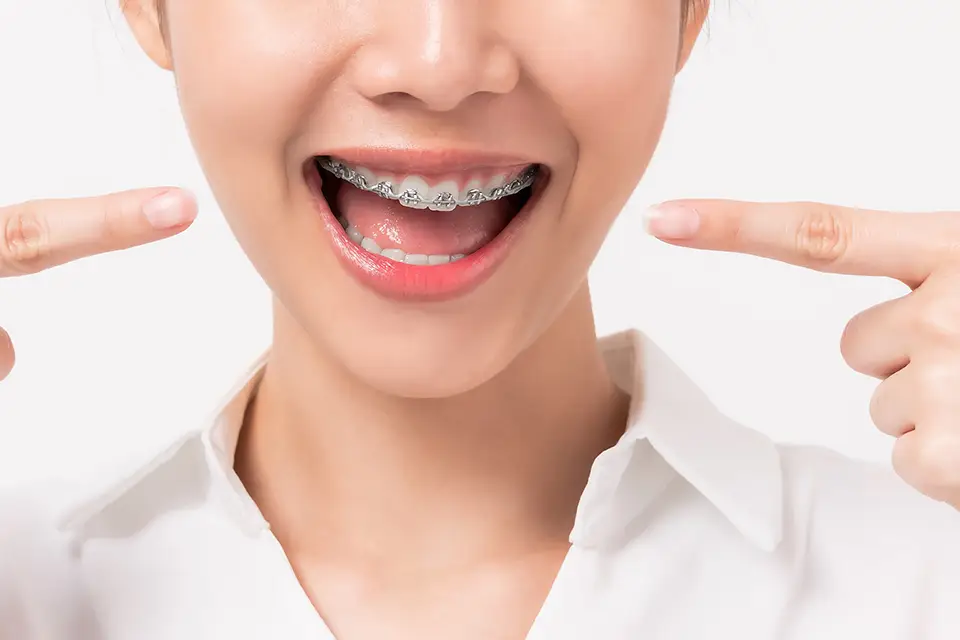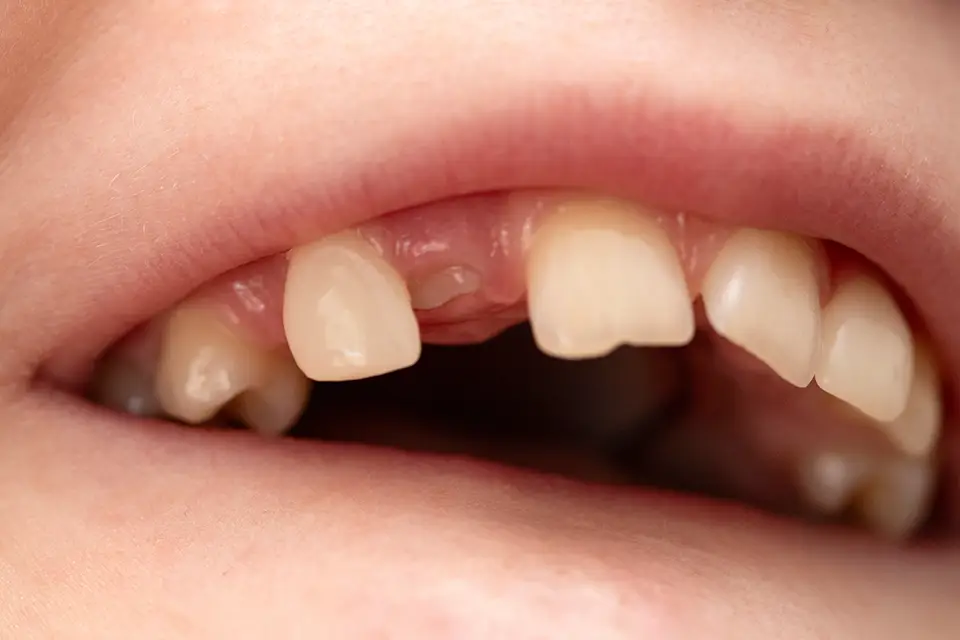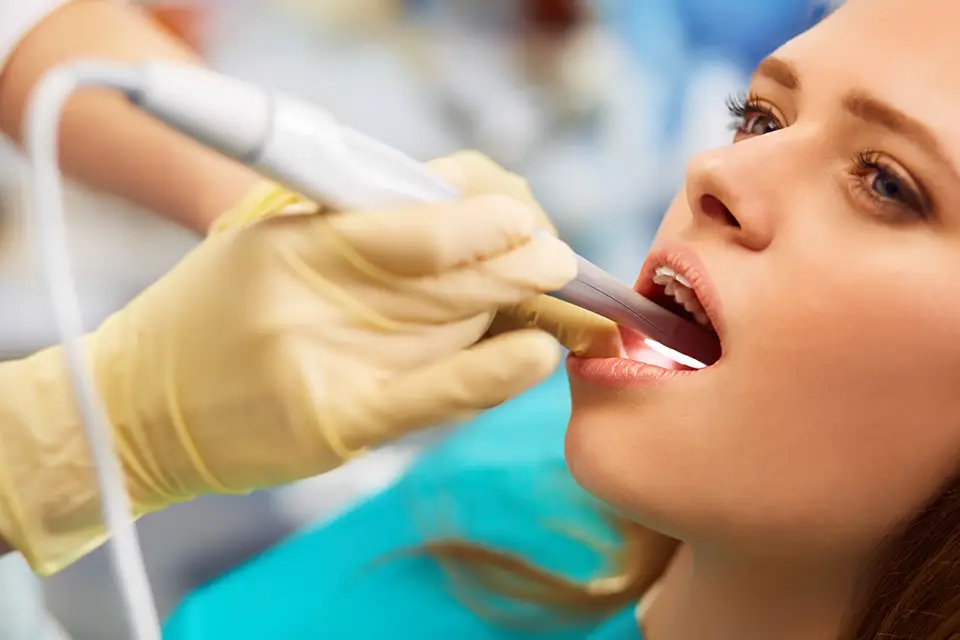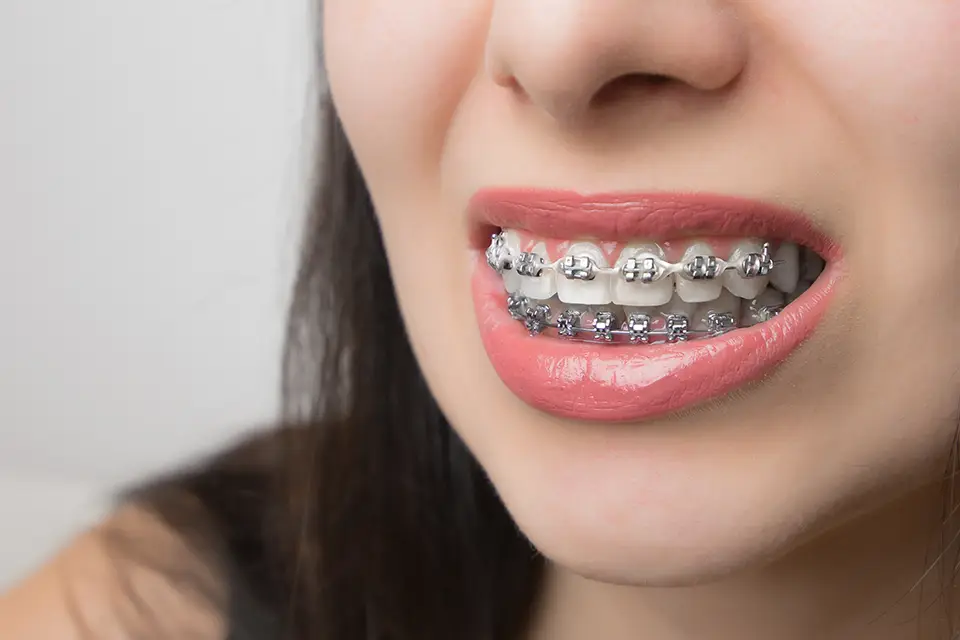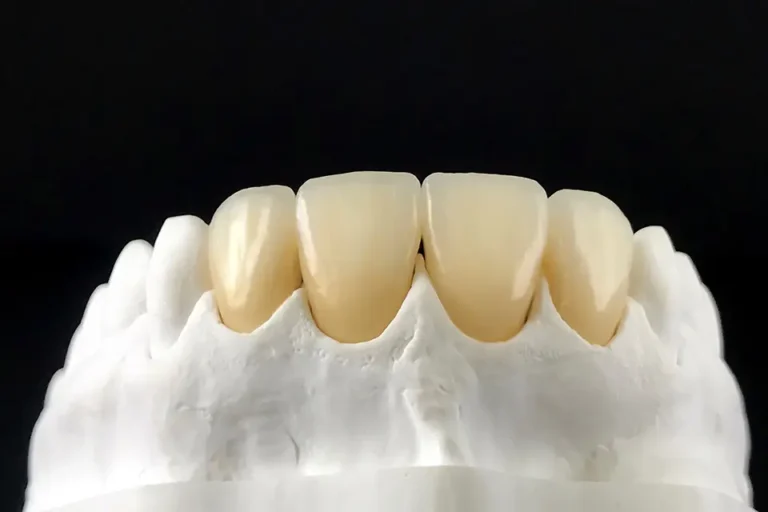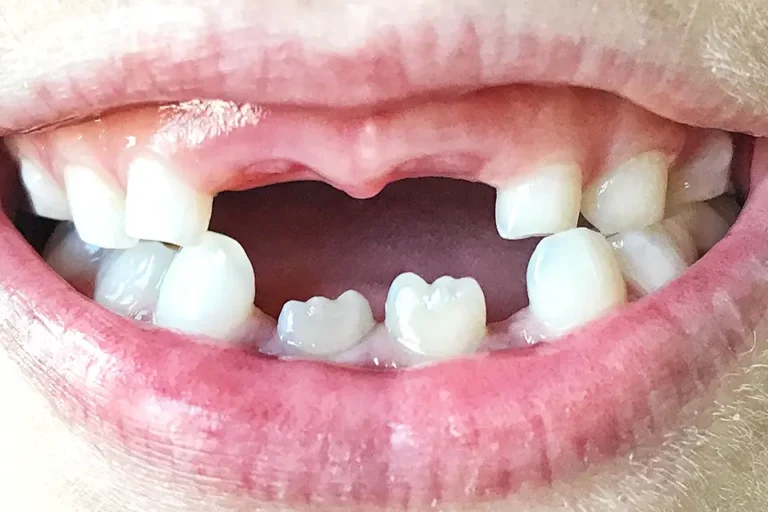When you are considering getting metal braces, it’s important to consider all your choices. There are many options that will provide incredible results. With so many types of braces out there, how do you know which method is the best for you?
Metal braces have been a rite of passage for many children over the years that needed to have their teeth straightened. But, if you are an adult, you may wonder what are the pros and cons of braces for adults? Believe it or not, even with all the new teeth-straightening methods available, there are many advantages of metal braces, and they can still hold their own among the competition. Here are a few advantages and disadvantages of metal braces to help you decide if they are for you.
See Also Braces cost in Houston.
What Are Metal Braces?
When you think of braces, you typically think of metal braces. These braces use a system of wires and brackets that straighten your teeth with an application of gentle pressure. Since this is an effective method, it has been a keystone of orthodontics for years. There’s a reason for this. It works.
The advantages of metal braces is that they provide healthy and straight teeth, and they have helped millions of people over the years. Keep in mind though that the traditional braces have also benefited from many advances over the years, so they aren’t necessarily the same metal braces you think they are. Before you choose traditional braces, its important to consider the metal braces pros and cons.
If you don’t know how traditional metal braces work, the brackets are applied to your teeth with a special type of dental glue. Archwires are then attached to the brackets, which encourage your teeth to move into the right place. As your teeth shift position, your gum tissue and bone will fill into the space that is left behind. Once your treatment is done, you will typically need to wear a retainer to make the results set, which is normally worn at night time for about a year.
See Also: How long it takes for braces to straighten my teeth
How Do Metal Braces Work?
Metal braces are a standard orthodontic treatment to correct misaligned teeth and bite problems. The mechanism involves brackets, small metal pieces bonded to each tooth’s surface. An archwire runs through these brackets, and small elastic bands called ligatures hold the wire in place. The archwire applies constant mild pressure to the teeth, gradually moving them into the proper positions. Moreover, this procedure uses the natural bone remodeling process, in which pressure on one side of the tooth causes the bone to break down, allowing the tooth to shift—new bone forms opposite sides to support the tooth’s new position.
Furthermore, the duration of treatment with metal braces varies depending on the severity of the dental issues being addressed. On average, most patients wear metal braces for 18 to 24 months. However, complex cases can take up to three years or longer. Additionally, regular appointments with the orthodontist are essential for making adjustments and ensuring that the teeth move according to the treatment plan. During these appointments, the orthodontist will tighten the archwire to maintain the pressure for the teeth to shift.
Traditional Metal Braces
The most frequent type of orthodontic brace is traditional metal braces. They consist of high-grade stainless steel brackets and wires. In addition to severe bite misalignments, these braces are exceptionally effective in treating an extensive range of dental issues. Moreover, despite their noticeable appearance, traditional metal braces have become more comfortable and less bulky. They are suitable for patients of all ages, including children, adolescents, and adults. Furthermore, patients can customize their braces through colored ligatures, an example of how modern advancements have enhanced their aesthetic appeal.
Conventional Metal Braces
Conventional metal braces function like traditional metal braces, using metal brackets and wires to align teeth properly. The term “conventional” commonly refers to the standard design and application method used in orthodontic treatments. In addition, these braces have a reputation for being long-lasting and effective in addressing complex orthodontic cases. Conventional metal braces provide predictable and reliable results, making them popular among orthodontists and patients. They also necessitate ongoing maintenance and adjustments, but the results are often very satisfying.
Cost of Metal Braces
Metal braces costs can vary greatly depending on various factors. Moreover, these include the complexity of the oral issues, the treatment length, and the orthodontic practice’s geographic location. On average, metal braces cost ranges from $3,000 to $7,000. The following are some of the factors that influence this price:
- The Severity of Dental Issues: More complex cases require more prolonged treatment, and additional orthodontic appliances are usually more expensive.
- Orthodontist’s Experience: Highly experienced orthodontists may charge higher fees.
- Geographic Location: The cost of orthodontic treatment varies greatly depending on the region and local cost of living. Moreover, urban areas, like Houston, Texas, may have higher treatment costs than rural areas.
- Insurance Coverage: Patients can significantly reduce their out-of-pocket expense for braces because dental insurance plans can cover a part of the cost. It’s crucial to speak with your insurance company to find out how much coverage you have.
- Payment Plans: Many orthodontic practices provide their patients with flexible payment plans to help them afford the desired treatment. These plans can spread the cost throughout the treatment, easing the financial burden on patients.
Furthermore, at Zara Dental in Houston, Texas, we recognize that the cost of braces is an essential factor for many patients. Our team is here to offer high-quality orthodontic care at reasonable pricing, and provide a variety of financing alternatives to make your path to a perfect smile as smooth as possible. If you’re considering getting metal braces, contact us now to set up a consultation and learn more about how we can help you achieve your dental goals.
Advantages and Disadvantages of Metal Braces
It’s important to know both the advantages and disadvantages before you have conventional metal braces placed on your teeth. There will obviously be a time period where you will adjust to the braces, plus you will be happy to know that they do not have severe side-effects. If you do not have a sensitive mouth or gums, you probably won’t have any issues. So, what are the metal braces pros and cons?
Advantages
Effective
Still considered the most effective type of braces, metal braces can be used for a wide range of orthodontic problems. Conventional metal braces help to correct your teeth alignment by treating each individual shift of every tooth. This treatment can provide life-changing and dramatic results. These are a few of the issues you can correct using metal braces:
- Protruding teeth
- Overcrowding
- Gaps in between teeth
- Misalignment
- Crossbites
- Overbites
- Underbites
It’s important to consider the effectiveness of your orthodontic treatment before you choose which treatment type you are going to go with. Remember that a healthy and beautiful smile is the entire reason why you are choosing metal orthodontia.
Quick Results
Along with effectiveness, fast results are the hallmark of this sophisticated system. Typically, a patient that is choosing metal braces will wear them for up to three years. However, if you compare it to all the dental bills you will rack up over your lifetime, it’s a pretty good financial investment as well as time.
Long known as the quickest way to attain straight teeth, metal traditional braces use a technology that prioritizes the effectiveness of the treatment. This is thanks to the fact that you can’t remove them and lose them, which allows them to work fast.
Affordable
Another one of the advantages of metal braces is that they tend to be less expensive, and, most importantly, they are typically covered by insurance. If they aren’t covered, you can typically finance through your dental office.
Durable
Designed to last through your entire treatment, the advantages of metal braces is that they are super strong and can hold up against the daily wear from brushing and chewing. Most commonly, metal braces will be made out of titanium and steel.
They are also designed to not interrupt your daily life, so it’s important to avoid certain foods like hard veggies or anything that might break your braces. You can otherwise continue all of your normal daily activities, which include rigorous exercises and sports.
Consistency
You also get a consistent treatment until they are done shifting your teeth. The advantages of metal braces over other types like clear aligners that may have to be removed when you eat or brush your teeth, which offers many possibilities for losing them. While this can be an advantage for those that don’t want to avoid certain foods, it can cause them to be less effective if you don’t wear them for the entire 22 hours.
Mini-Versions
Metal braces are also smaller than they used to be, so you don’t have to deal with so much metal in your mouth. Since they are less noticeable, they also have more aesthetic benefits. If that is important to you, choose the mini metal braces that are smaller and very subtle.
Healthy Mouths
Straightening your teeth with metal braces allow you to safeguard your teeth against injuries and chronic conditions. When you have straight teeth, you have a more hygienic mouth since they are easier to brush allowing you to avoid bad breath, gum disease, and tooth decay. Plus, with straight teeth, you can prevent injury that can happen when something hits you in the mouth against your protruding teeth. Misaligned teeth can also cause people to have trouble sleeping, headaches, and speech impediments, which can all be alleviated by straightening your teeth.
Allows you to Avoid More Complicated Issues
If you don’t treat your orthodontic problems, they just end up getting worse. But, if you take the proper care of your teeth, they will stay healthy and strong throughout your entire life. Braces allow the pressure in your mouth to be relieved and also help you take care of your teeth. Plus, if you use metal braces to straighten your teeth now, it can remove the need for dentures and extractions later in life.
Sense of Pride
If your teeth are straight, it can help make you proud of your appearance. Once you have had braces, you won’t feel like you have to hide your teeth from people when you first meet them or hide your teeth in photos. When you have a gorgeous smile, you can feel more confident when you go to formal events like graduations, weddings, and business events. Think of it as a huge confidence builder that everyone should have.
Great for Everyone
If you happen to be considering metal orthodontia, you may wonder if you are a candidate for the metal version. You may be surprised to find out the any is most likely yes. Very beneficial for almost anyone that needs orthodontic care including both adults and children. Metal braces are able to take on some of the most complicated orthodontic cases and the mildest cases.

Disadvantages
Decalcification
Decalcification can happen to your teeth when someone that has metal braces does not floss or brush correctly. Basically, decalcification is the very start of a cavity and has a white appearance.
Sores
A bracket can sometimes rub against the inside of your mouth irritating the area and forming a sore. If you have a sore that was caused by brackets as you sleep, you can cover it with orthodontic wax to avoid getting any more.
Foods You Must Avoid
As long as you have metal braces, there are specific foods that you will have to avoid like corn on the cob, taffy, and gum. Basically, anything that can easily get tuck in the brackets.
Tightening or Adjustments
You will have to have your metal braces tightened occasionally, which can be uncomfortable and cause soreness in your mouth for two to four days. During that time, it’s recommended that you only eat soft foods.
Alternative to Metal Braces
Ceramic Braces
The same shape and size as traditional braces, ceramic braces are different in that they have clear or tooth-colored brackets that will blend in with your teeth. Sometimes tooth-colored wires are even used to make them even less noticeable. Ceramic braces are similar to traditional metal braces in that they use brackets, but they are made out of transparent ceramic material.
These braces are less visible than the other types of braces and are a great choice for an adult that needs orthodontic treatment. If you choose this type of braces, you may find that the elastic can become discolored, which can actually leave marks or discoloration on your teeth.
See also: Ceramic Braces Cost.
Pros:
- Ceramic braces are less noticeable than the traditional braces
- These braces move teeth faster than the clear plastic aligners do
Cons:
- Ceramic braces are more expensive than traditional braces
- The brackets can easily stain easily if you don’t care for your braces well
Invisalign®
Consisting of a series of custom-made, mouth guard-like aligners that can range in number from 18 to 30, Invisalign aligners can be removed and are replaced every two weeks. This type of orthodontic tool can be used instead of lingual braces or traditional braces. Invisalign braces are custom made just for your mouth, and you will remove them to clean them or when you eat.
Every two weeks, you get a new aligner that will continue the adjustment process of your teeth another step. Clear aligners can be a great choice if you need ongoing once you have completed an orthodontic treatment since they allow you to maintain your results until your teeth have settled into their new positions and stopped moving.
Pros:
- These braces are almost invisible
- You can drink or eat whatever you want without worrying about breaking them
Cons:
- Clear aligners will not help you with a serious dental problem
- They are only available for teens and adults, but not children
- It is the most expensive braces option and is expensive to replace
- The treatment can possibly take longer than traditional braces
Lingual Braces
Providing fewer dental visits and overall gentler treatment, lingual braces are very similar to the traditional braces except that the wires and brackets are placed on the inside of your teeth. Enjoying a recent wave of popularity with both patients and orthodontists, lingual braces feature a slide mechanism in place of elastic to connect archwires.
Lingual braces offer faster results since your teeth can move without requiring adjustments. Causing less pressure and friction on your teeth, instead of elastics to connect the archwires.
Causing less friction, lingual braces require less pressure on your teeth, so the movement isn’t as painful. Plus, your teeth are easier to keep clean and you have less trip to the orthodontist, which means you save money and time on the whole process. that the process costs less time and money, too.
Pros:
- They are invisible from the outside
- Lingual braces are less painful and require fewer trips to the office
Cons:
- Lingual braces are hard to clean and are more expensive
- These braces will not work for more than several orthodontic cases
- The regular adjustments that are needed take longer and can be harder than traditional braces
Out of all the types of braces that you can choose from, the most effective are the traditional braces that you remember from childhood. Other types of braces may be less visible and allow you to eat your favorite foods, but they can also take longer and cost more money in the end. When you consider the pros and cons of braces for adults, you’ll find that metal braces can be your best choice. If you’re interested in having metal braces, contact Zara Dental in Houston, Texas, for more information and a consultation.



